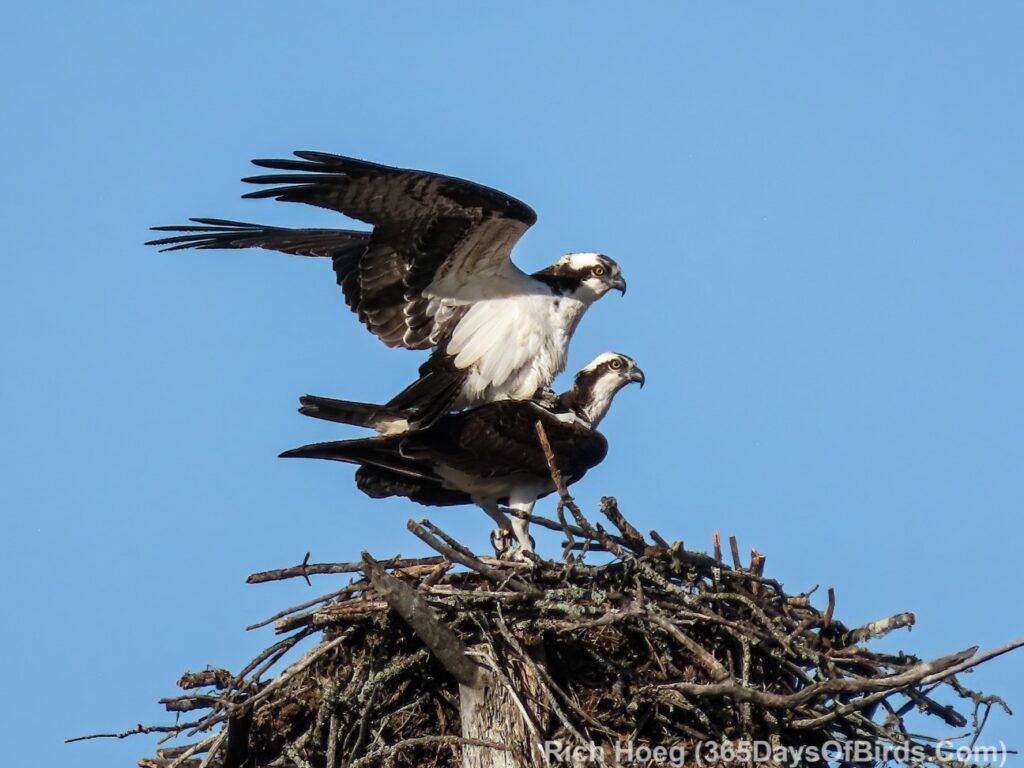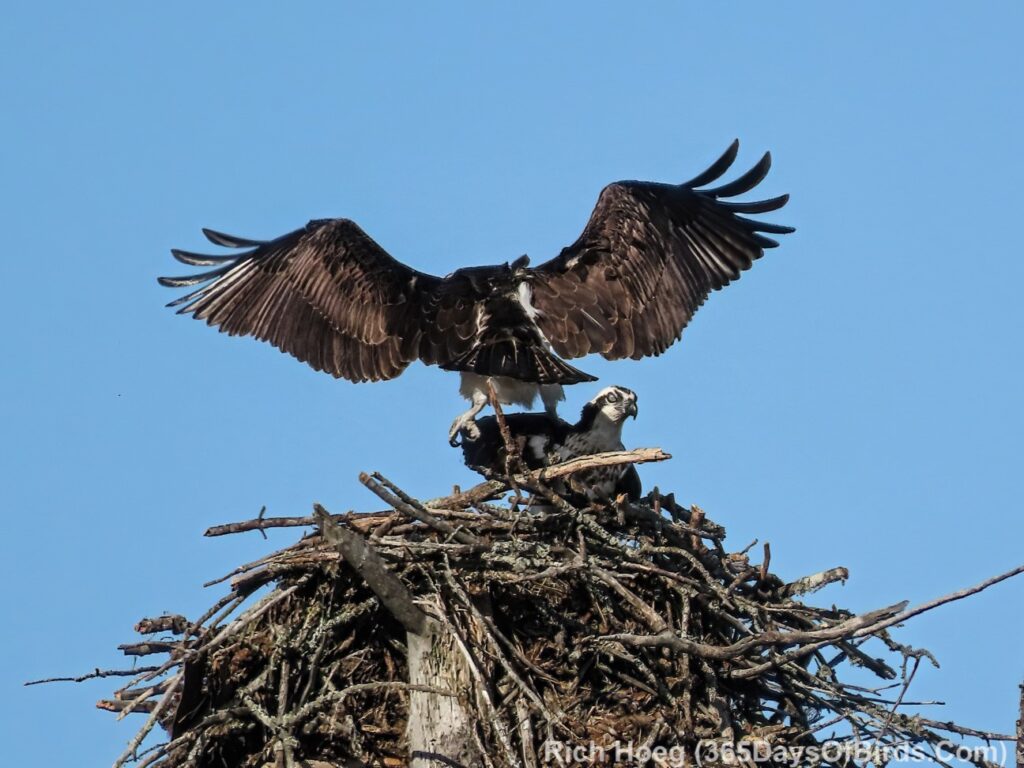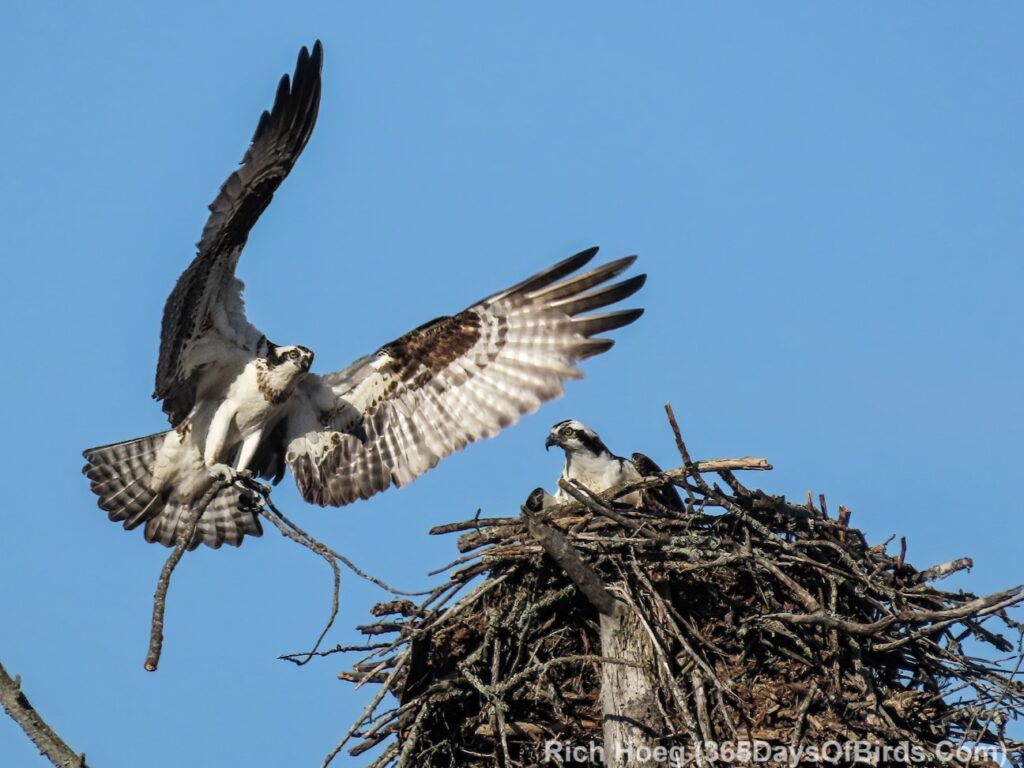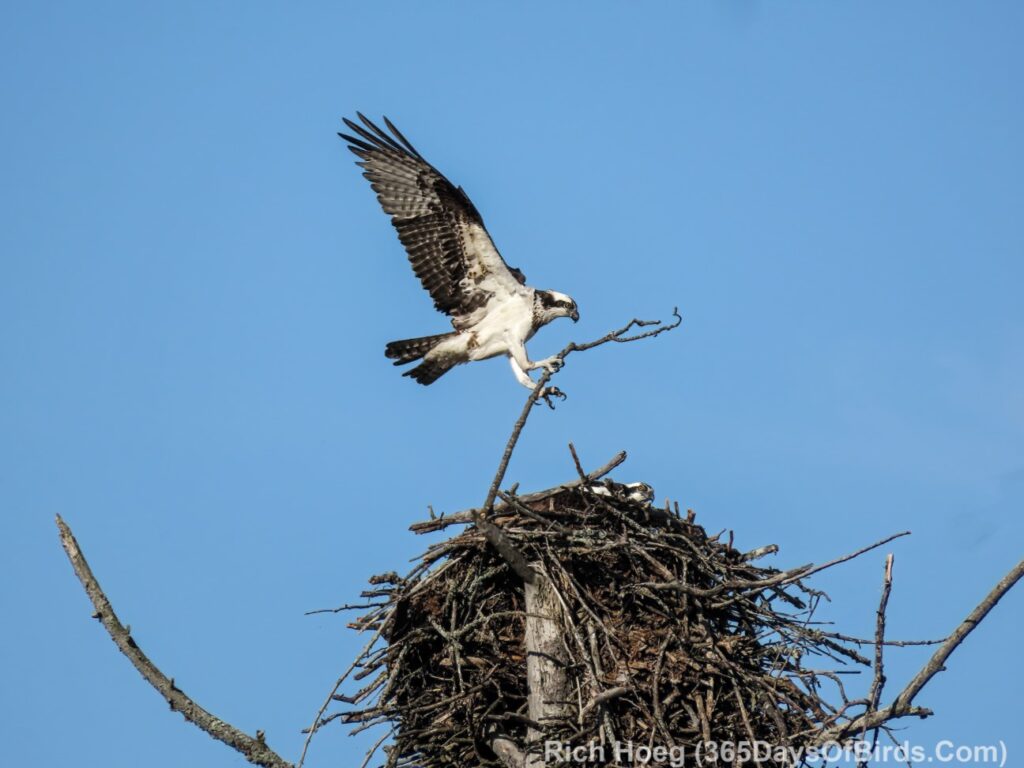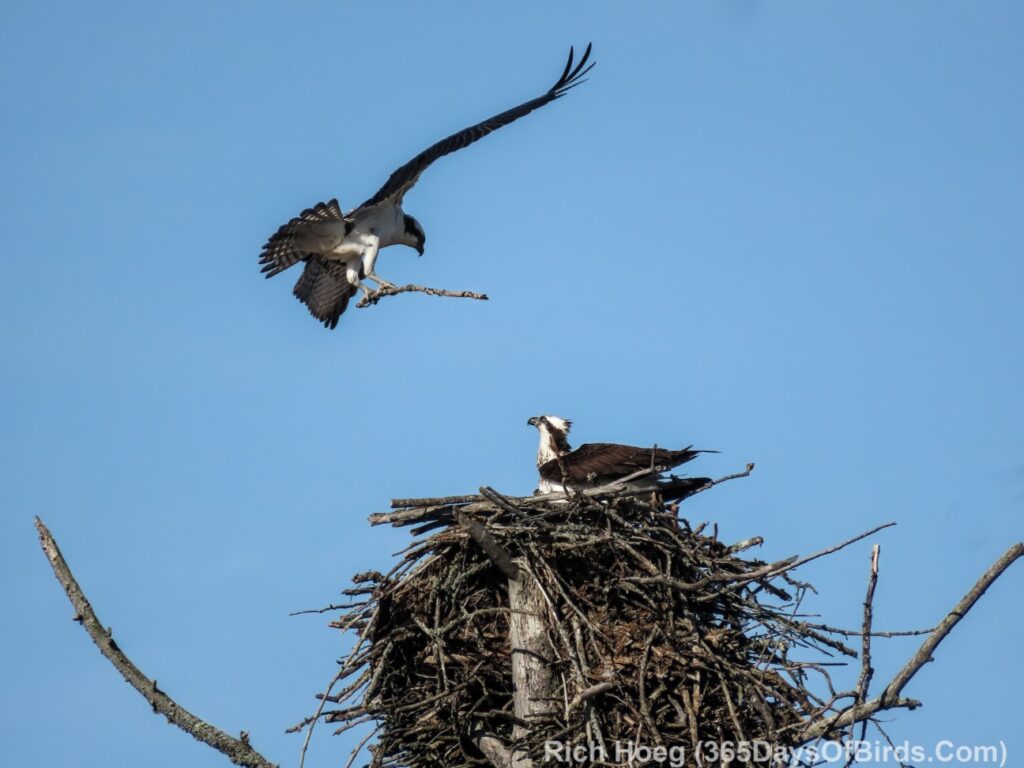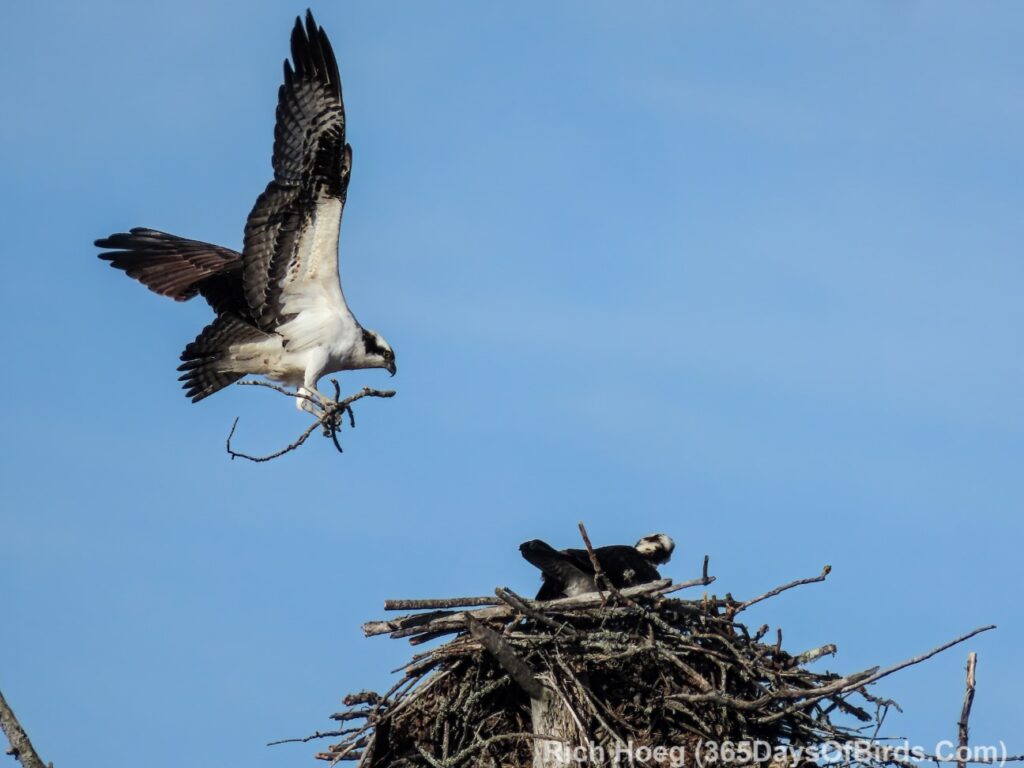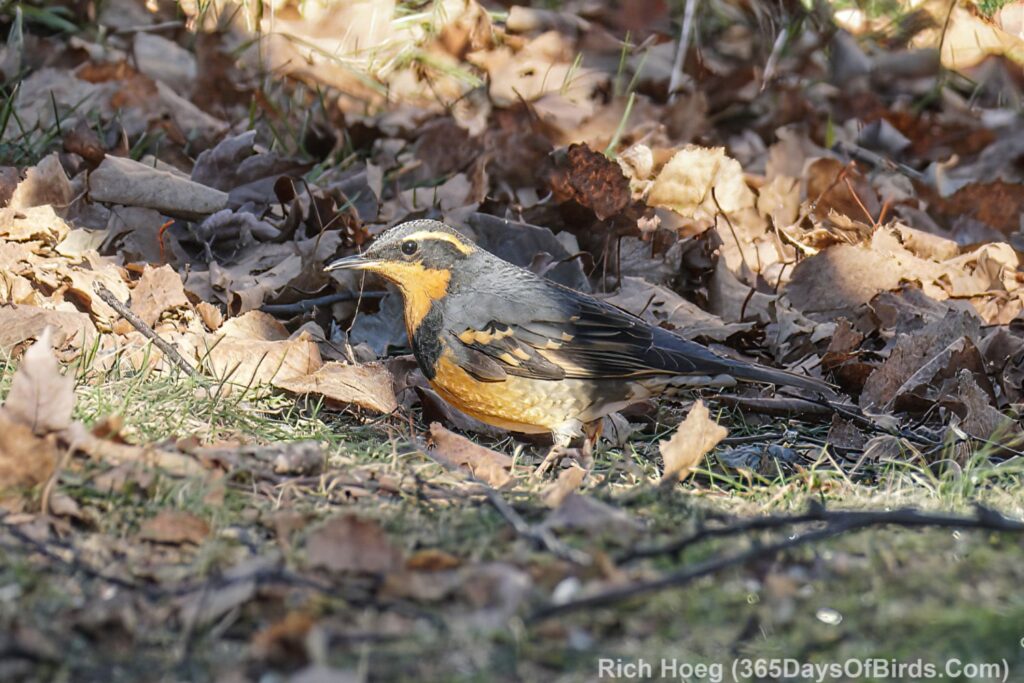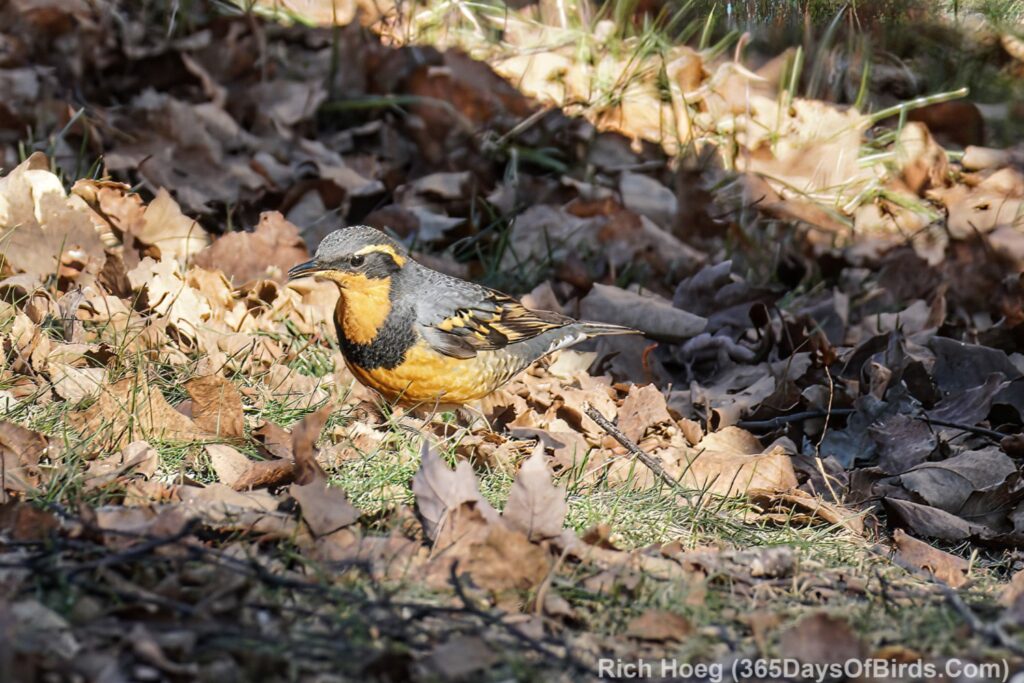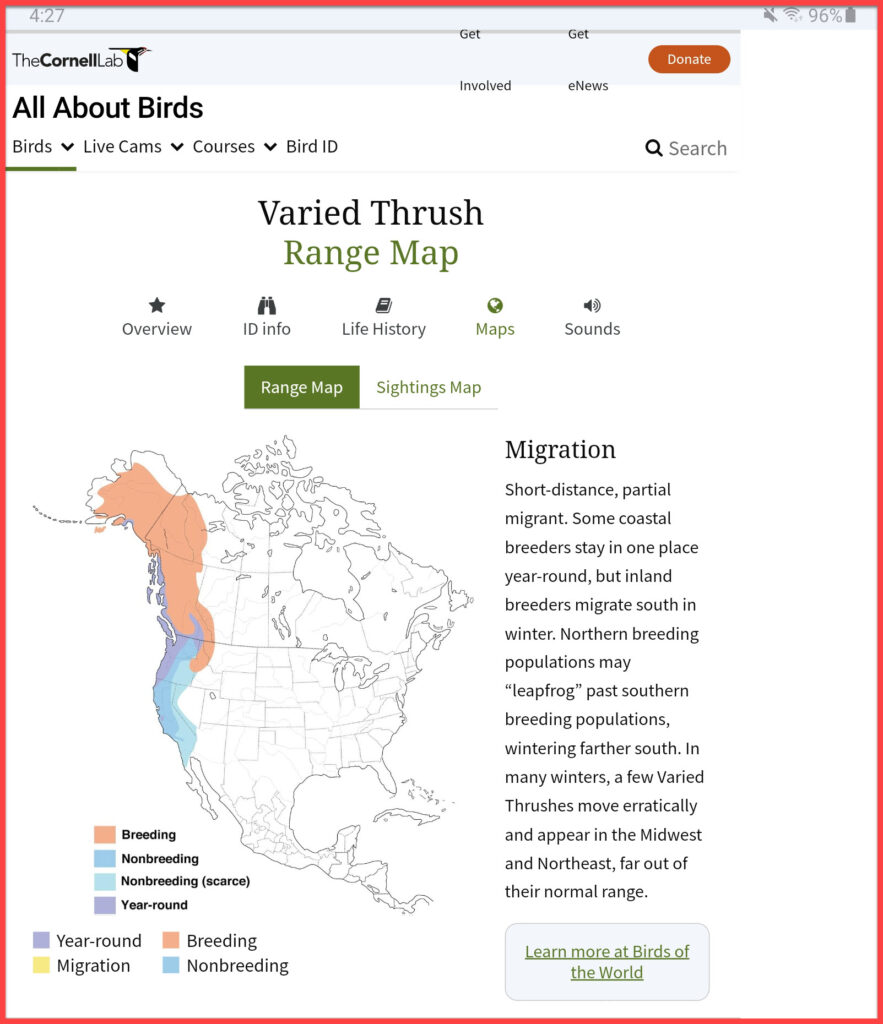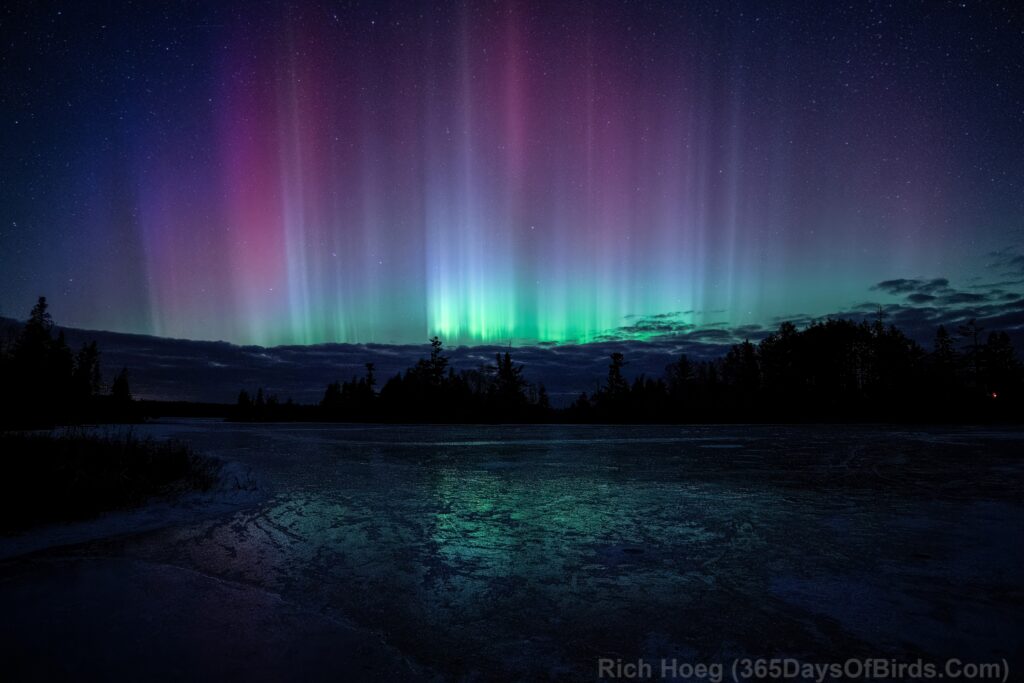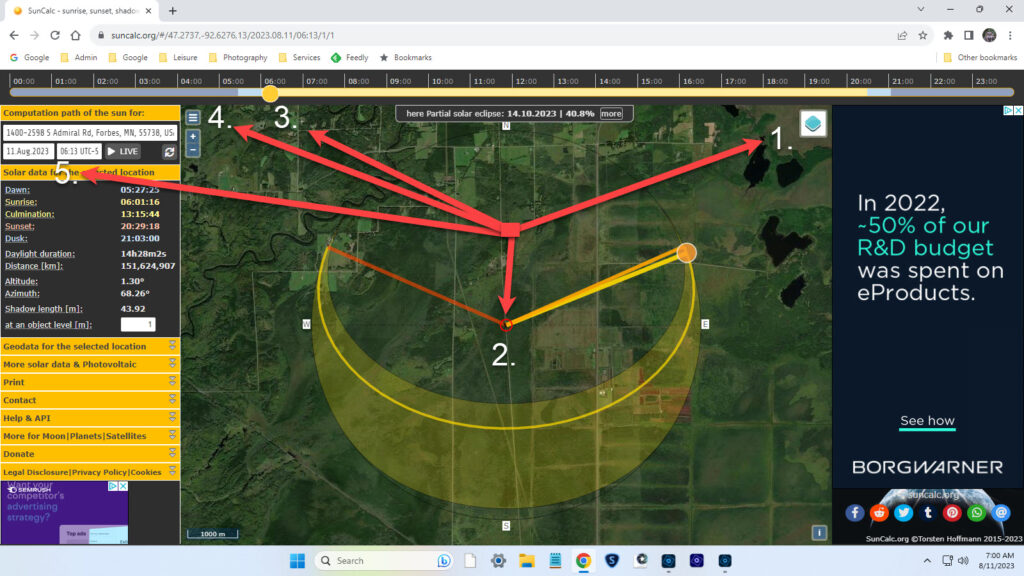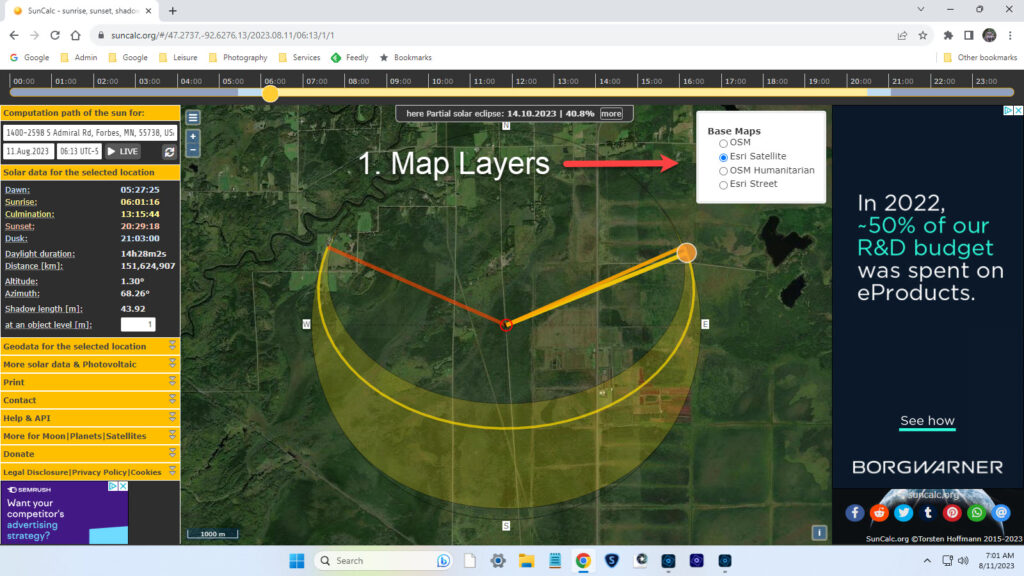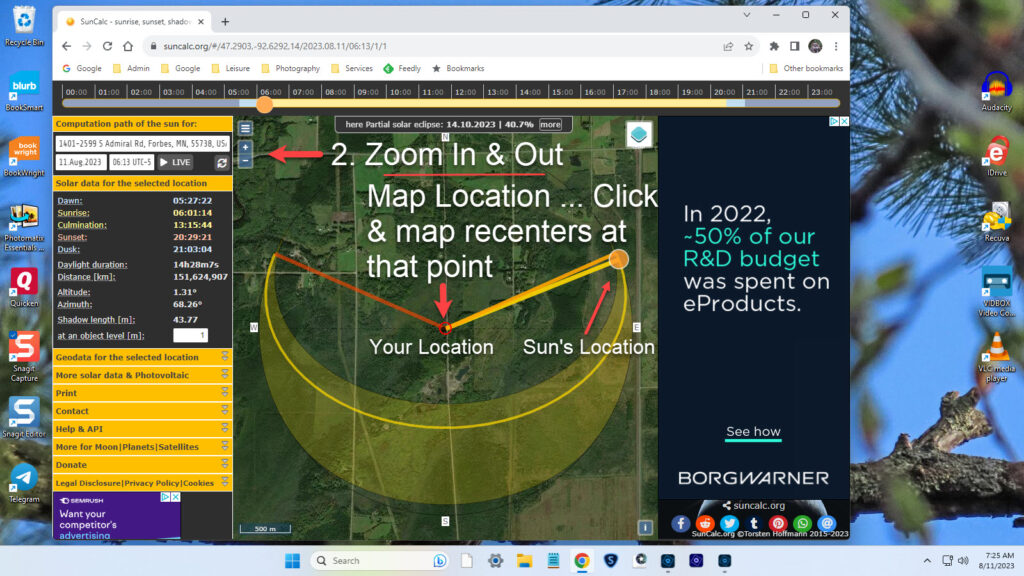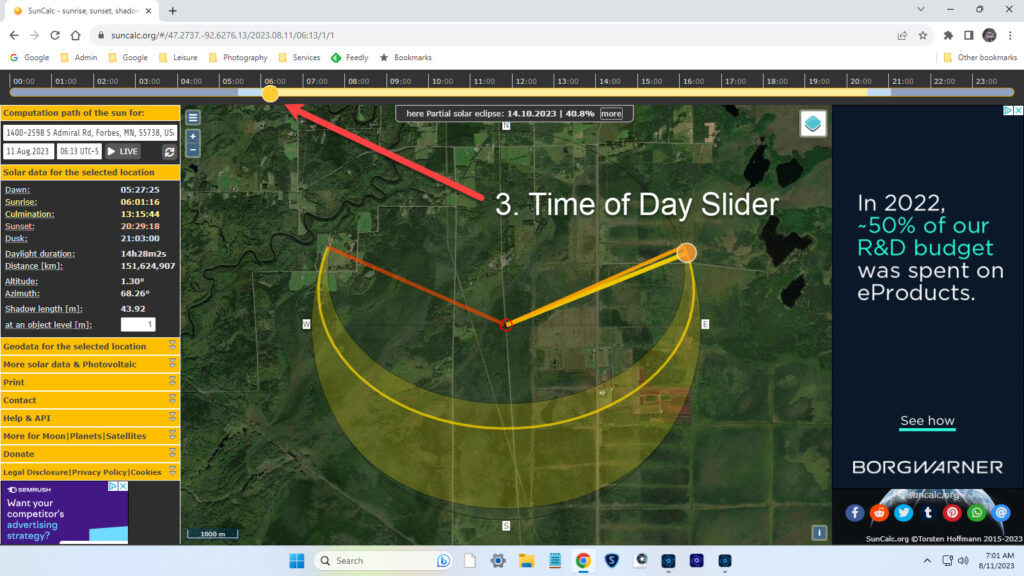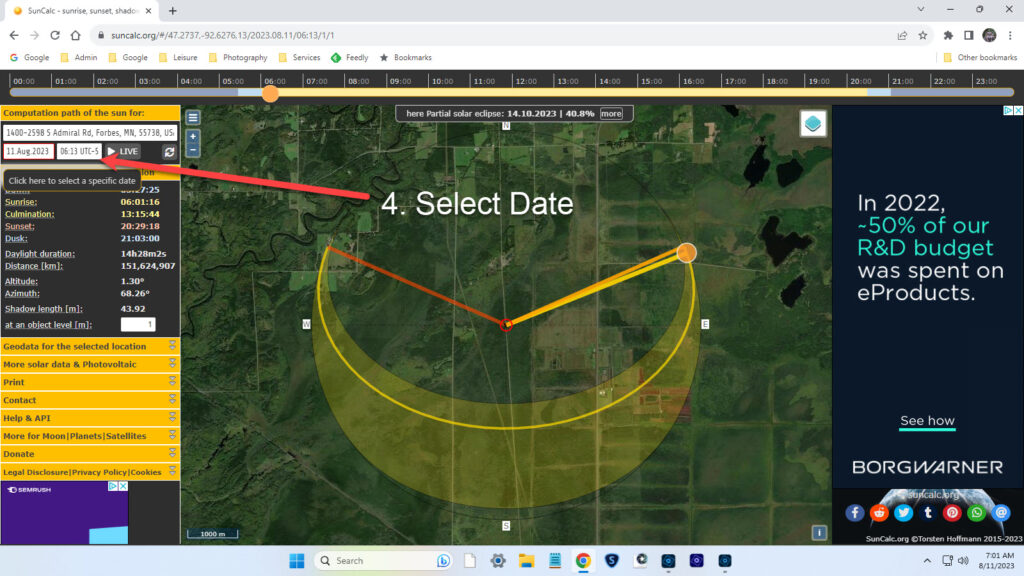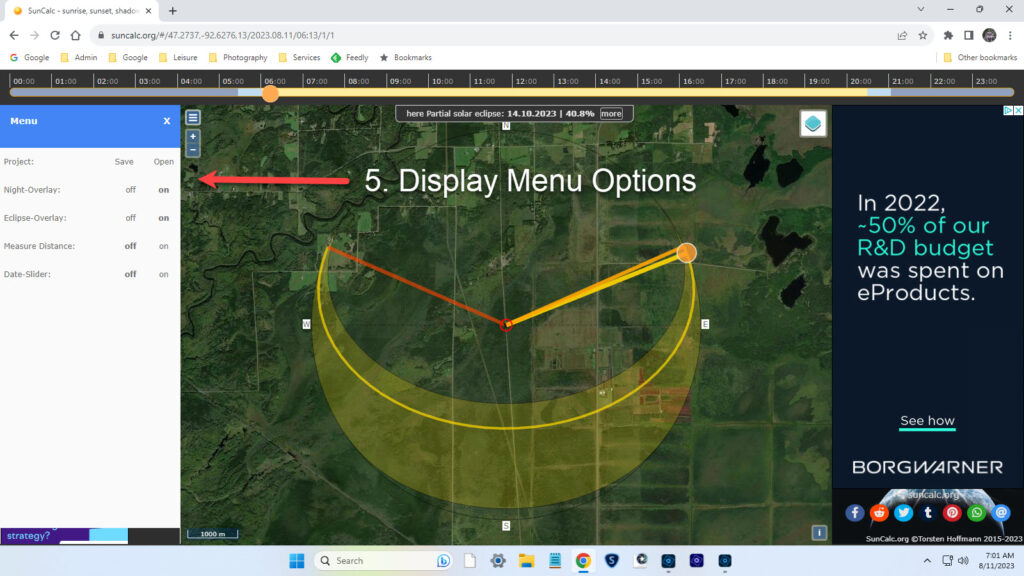Eight days ago I noticed that male ospreys had arrived back in the Northland, and specifically the Canosia Wildlife Reserve. The reserve has three osprey nests. I assume these raptors find the fishing in the nearby lakes and ponds stellar. As of this morning, two nest have males “hanging” out, waiting and hoping for females to return north. The nest off Lismore Road must be prime habitat as the male at that nest had already been selected as a mate by a returning female.
Sunday morning I enjoyed watching the ospreys cement their relationship! This nest even has a nearby Great Blue Heron Rookery, and the ospreys did not take kindly when two herons made a pass at their nest. The “fish eagles” attacked instantly! (see the video)
I’m not certain these images and videos were Sunday morning certified, but I had fun watching the pair ospreys before church!
The Happy Couple! Was it as Good for You?!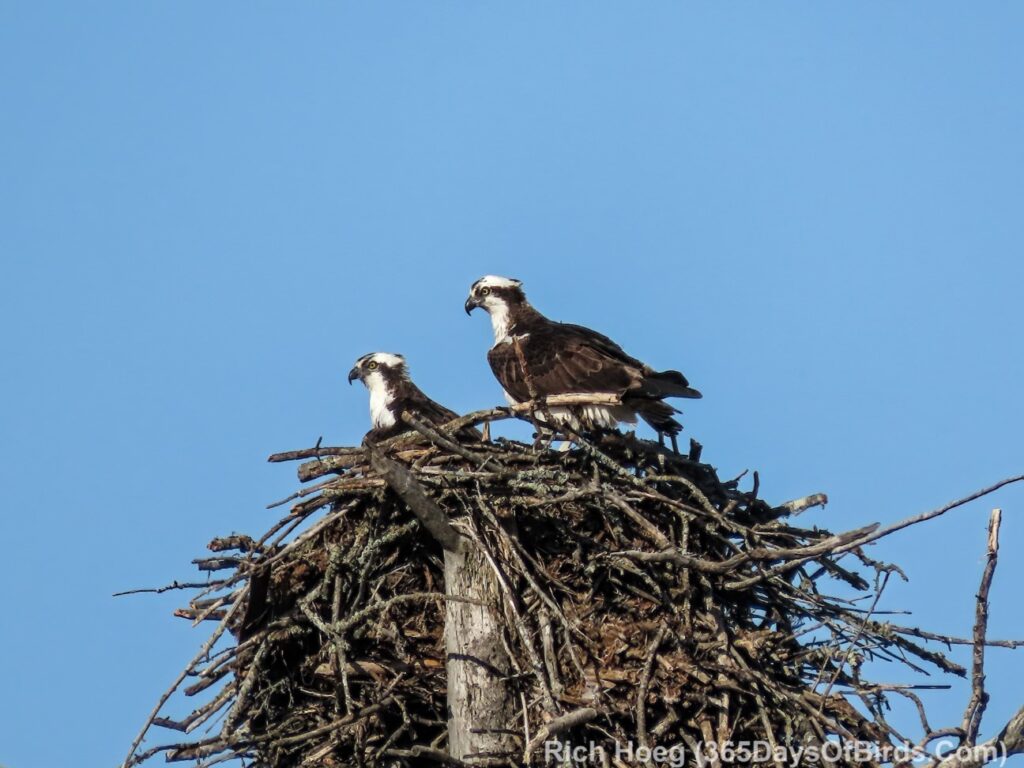
Bringing Sticks Post Coupling. I guess the male wants to let his sweetheart understand the depth of his love!
Stick Delivery #2 (a double! … a stick in each talon) 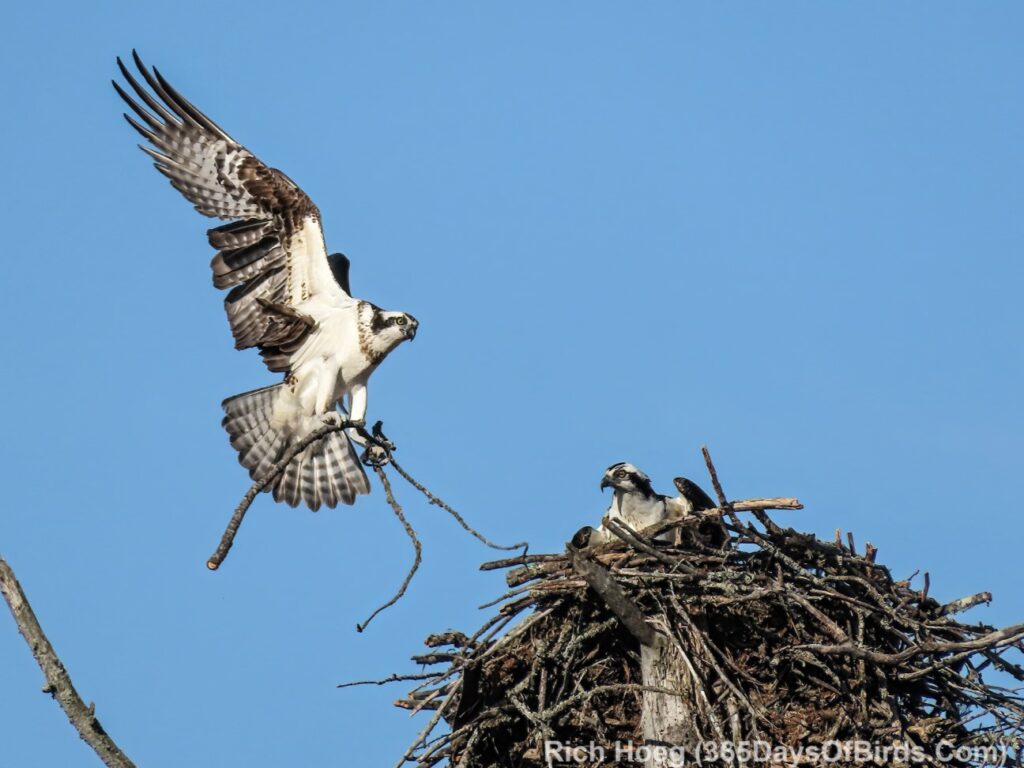
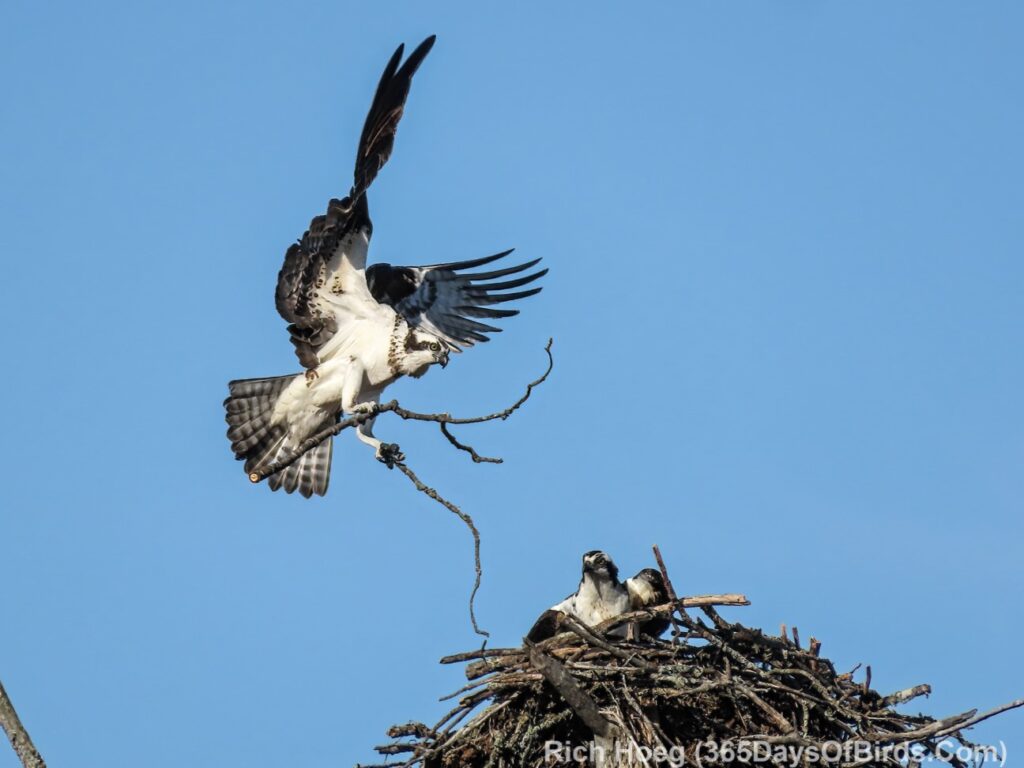
Ospreys Mating & Nest Building … the Movie! (video link for email subscribers)
